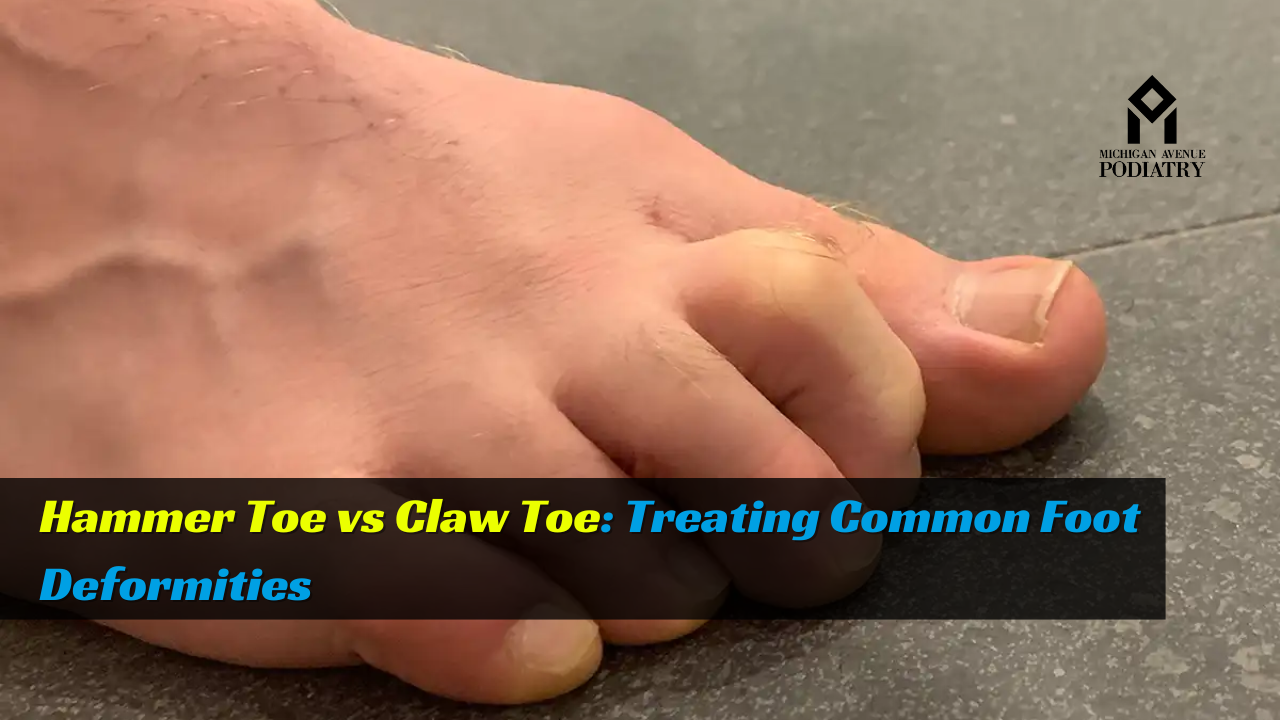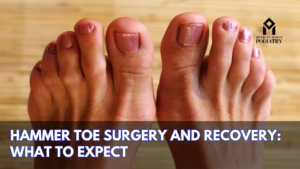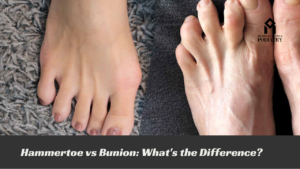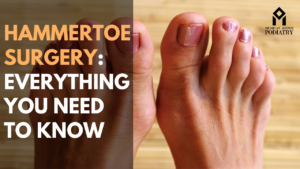Delving into the realm of common foot deformities, distinguishing between hammer toe and claw toe is imperative for accurate diagnosis and tailored treatment. These structural anomalies, though similar in appearance, entail distinct characteristics and necessitate targeted interventions to alleviate discomfort and restore proper foot function. Let’s embark on a journey of elucidation, unraveling the intricacies of hammer toe and claw toe while exploring effective treatment modalities under the guidance of podiatric expertise, particularly in Chicago.
Understanding Hammer Toe:
Hammer toe, a prevalent toe deformity, manifests as an abnormal bend in one or more joints of the toe, resembling the shape of a hammer. This condition often results from muscle imbalance, tendon contracture, or improper footwear, leading to the misalignment of toe joints and the development of painful corns or calluses. Hammer toe typically affects the second, third, or fourth toes, causing discomfort and difficulty wearing shoes.
Identifying Hammer Toe Features:
Distinctive features of hammer toe include:
- Flexion deformity at the proximal interphalangeal (PIP) joint.
- Extension deformity at the metatarsophalangeal (MTP) joint.
- Formation of corns or calluses due to friction and pressure.
- Pain and discomfort, particularly with shoe wear.
- Limited range of motion in the affected toe joint.
Exploring Claw Toe Phenomenon:
Claw toe, akin to its hammer toe counterpart, involves abnormal bending of the toe joints, but with distinct characteristics. In claw toe, both the PIP and distal interphalangeal (DIP) joints are hyperextended, resulting in a claw-like appearance of the affected toes. This condition often stems from muscle imbalance, nerve damage, or underlying systemic conditions such as diabetes or rheumatoid arthritis, predisposing individuals to toe deformities and associated complications.
Distinguishing Claw Toe Attributes:
Key attributes of claw toe encompass:
- Hyperextension of both the PIP and DIP joints.
- Claw-like appearance of the affected toes.
- Presence of corns or calluses on the dorsum or tips of the toes.
- Difficulty straightening the affected toes manually.
- Associated symptoms such as numbness or tingling, particularly in neuropathic cases.
Discerning Differences and Similarities:
While hammer toe and claw toe share commonalities in terms of toe joint deformities and associated symptoms, discerning their unique features is essential for accurate diagnosis and targeted treatment. Both conditions may lead to discomfort, difficulty wearing shoes, and the formation of corns or calluses, necessitating proactive management under the guidance of a podiatrist.
Treatment Strategies for Toe Deformities:
Tailoring treatment approaches to address the specific needs of hammer toe and claw toe is paramount for optimal outcomes and symptom relief.
Conservative Measures:
- Footwear modification: Choosing shoes with wide toe boxes and adequate depth to accommodate toe deformities.
- Toe exercises: Performing toe stretches and strengthening exercises to improve muscle balance and flexibility.
- Padding and orthotic support: Utilizing toe spacers, gel pads, or custom orthotics to alleviate pressure and realign toe joints.
Medical Interventions:
- Corticosteroid injections: Administering corticosteroid injections to alleviate inflammation and pain associated with toe deformities.
- Surgical correction: Considering surgical options such as tendon release, joint fusion, or toe arthroplasty for severe or recalcitrant cases.
Collaborating with a Podiatrist:
Consulting a podiatrist, especially in chicago, is instrumental in navigating the complexities of toe deformities, facilitating accurate diagnosis, and implementing tailored treatment plans. These specialized healthcare professionals possess expertise in foot biomechanics, gait analysis, and surgical interventions, ensuring comprehensive care and optimal outcomes for individuals with hammer toe or claw toe.
In Conclusion:
Hammer toe and claw toe, though sharing similarities in toe joint deformities and associated symptoms, entail distinct characteristics and necessitate tailored treatment approaches. By understanding the unique features of each condition and collaborating with a podiatrist, individuals can embark on a path towards alleviating discomfort, restoring proper foot function, and enhancing overall quality of life.




